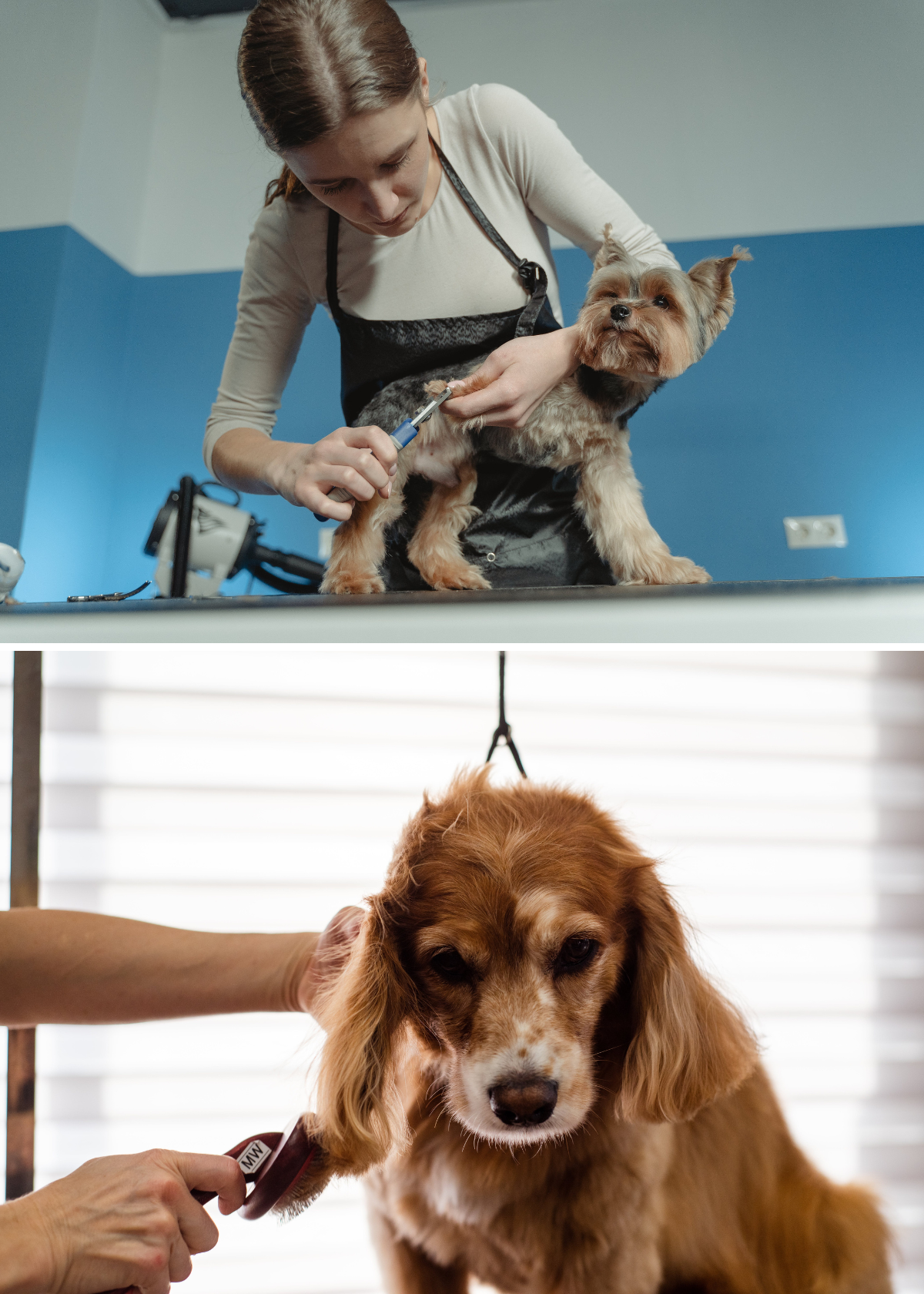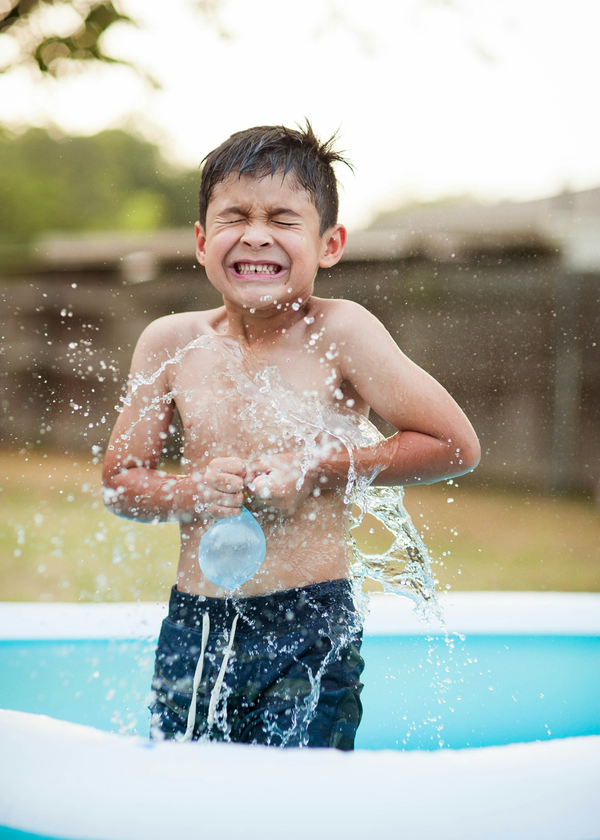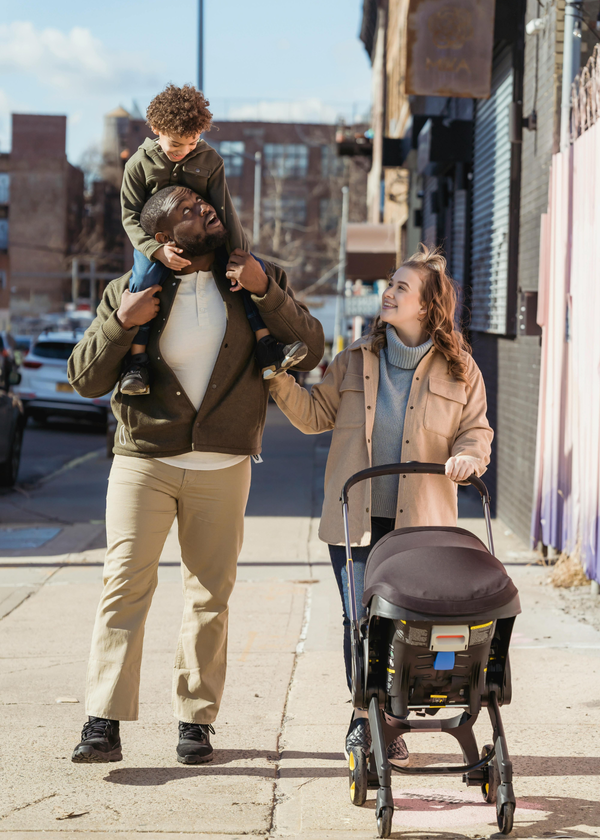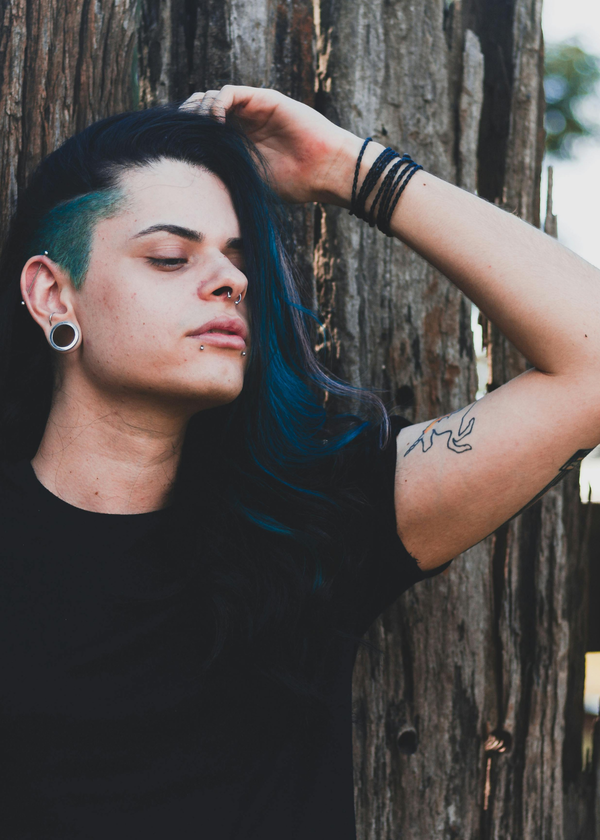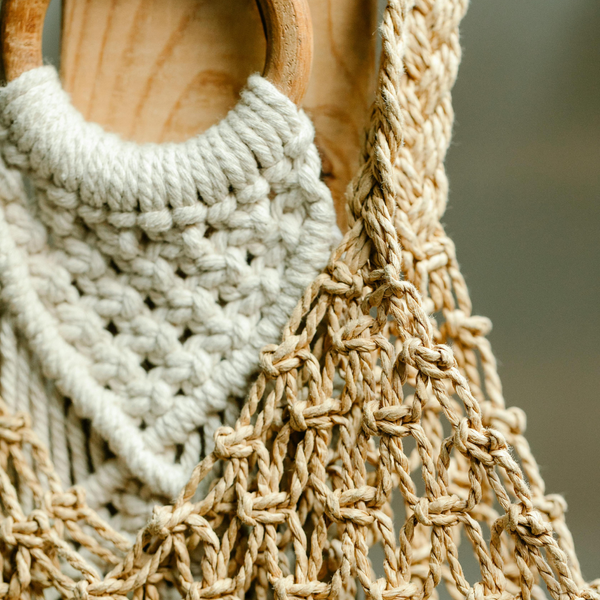The Essential Arsenal of Dog Grooming Tools
When it comes to keeping our furry friends looking their best, professional groomers have a treasure trove of tools at their disposal. The primary goal is to remove all the loose hair from a dog's coat without causing any harm to the dog's skin. For dog owners who are curious about what do dog groomers use to remove hair, the answer lies in a variety of specialized grooming tools designed to tackle different types of fur and shedding patterns.
Slicker Brushes: A Groomer's Best Friend
One of the most common tools in a groomer's kit is the slicker brush. These brushes are equipped with fine, short wires close together on a flat surface and are excellent for removing mats and tangles. Slicker brushes work well on many dogs, especially those with longer hair or those prone to knotting, like the golden retriever or the German shepherd.
Deshedding Tools for the Shedding Season
During shedding season, groomers often turn to deshedding tools. These tools are specifically designed to reach deep into the dog's undercoat and remove loose hairs without damaging the topcoat. Brands like Furminator have popularized these tools, which are a must-have for managing the excess fur of double-coated breeds.
Grooming Gloves: Gentle and Effective
For a more hands-on approach, grooming gloves are a fantastic option. These gloves have rubber bristles or soft nylon bristles on the palm area, allowing groomers to capture loose fur while petting the dog. They provide a secure fit and can be especially useful for short-haired dogs or for giving a more thorough clean during a bath with warm water and shampoo.
The Versatility of Combo Dog Brush Amazon Finds
Online marketplaces like Amazon offer a plethora of pet products, including the combo dog brush. These brushes typically feature a two-in-one design with bristle brushes on one side for smoothing the coat and pin brushes on the other to remove loose hairs. They're a versatile choice for dog owners looking to independently evaluate and maintain their dog's coat between professional grooming sessions.
Pin Brushes and Bristle Brushes: A Classic Choice
Pin brushes are another staple in the grooming process. They have widely spaced wires with rounded tips that glide through the coat, making them suitable for dogs with fine hair. On the flip side, bristle brushes, with their tightly packed natural bristles, are excellent for capturing loose fur on dogs with shorter coats.
Grooming Tables: A Stable Platform
A grooming table might not directly remove hair, but it provides a stable platform for the grooming process. It allows groomers to work at a comfortable height and safely secure the dog, making it easier to thoroughly brush through the dog's fur and collect hair.
The GoPets Dematting Comb for Tough Tangles
For dogs with mats and tangles, the GoPets Dematting Comb is a lifesaver. This tool has stainless steel teeth with rounded tips to safely cut through the mats without pulling on the pup's skin. It's particularly useful for breeds with longer hair that are prone to matting.
Curry Brushes for Short Coats
Curry brushes, made from rubber with rubber bristles, are ideal for short-haired breeds. They are designed to massage the dog's body while removing dirt and loose hairs. The gentle action also helps distribute the dog's natural oils throughout the coat, promoting a healthy shine.
The Importance of Warm Water and Shampoo
While not tools in the traditional sense, warm water and a good quality dog shampoo are essential in the grooming process. They help to loosen and remove excess hair and dirt, making the physical removal of hair much easier during the bath.
Navigating the Undercoat: Tools for Double-Coated Breeds
When it comes to managing a dog's undercoat, especially in breeds with double coats, the right tools can make all the difference. A dog groomer often reaches for specialized undercoat rakes that are designed to gently remove loose fur without damaging the dog's skin. These rakes are adept at getting through thick fur, targeting the dense hair that lies beneath the topcoat. For owners of at least one dog with a double coat, investing in an undercoat rake can significantly reduce shedding and keep the dog's coat looking healthy and well-maintained.
In addition to undercoat rakes, a slicker brush can be used to smooth out the topcoat while also pulling up any loose hair from the undercoat. This is particularly useful for long-haired dogs who are prone to matting and tangling. Regular use of these tools not only keeps your pup's skin and coat in top condition but also minimizes the amount of hair that ends up on your furniture and clothing. It's a win-win for both the dog's comfort and the owner's convenience.
High-Frequency Combs: Precision for Pups
When it comes to maintaining the sleek appearance of a dog's coat, high-frequency combs are a must-have in any groomer's toolkit. These combs are designed with closely spaced teeth that are perfect for working through the fine hair of short-haired dogs, ensuring that every strand is neatly aligned. Not only do they help in detangling, but they also remove any debris or loose fur that may be clinging to the dog's body, promoting a healthier and shinier coat.
Moreover, high-frequency combs are gentle on the pup's skin. They glide smoothly over the body parts, preventing any unnecessary pulling that might cause discomfort. This is particularly important for breeds with sensitive skin or those prone to skin conditions. By using these combs regularly, groomers can help to distribute natural skin oils throughout the dog's fur, enhancing its natural sheen and contributing to overall skin health.
Innovative Grooming Solutions: Beyond the Brush
When it comes to maintaining a dog's coat, innovative grooming solutions are constantly emerging to make the process more efficient and comfortable for both the groomer and the pup. One such innovation is the use of high-velocity dryers, which not only speed up the drying process but also help to remove loose fur from the dog's body. These powerful tools can be particularly useful for dogs with thick undercoats, as they blast away the hair that a brush might not reach. Additionally, they are a boon for short-haired dogs, whose sleek coats can trap dirt and debris close to the skin.
Another cutting-edge tool in the grooming world is the electric grooming brush. These devices combine the traditional brushing action with a gentle vibration that helps to loosen dead hair and stimulate the dog's skin. Not only do they help to keep the dog's fur in top condition, but they also provide a soothing massage that many dogs find enjoyable. This can be especially beneficial for dogs that are sensitive to grooming or have anxiety, as the calming effect of the vibration can make the grooming experience more pleasant for the pup's skin and nerves.
The Science Behind Dog's Coat Health
When it comes to maintaining the health and appearance of a dog's coat, understanding the science behind it is crucial. A dog's skin and fur are indicators of their overall well-being. The skin serves as a protective barrier, while the fur helps regulate body temperature and provides insulation. Groomers often use specialized shampoos and conditioners that are formulated to enhance the dog's coat health, ensuring that the natural oils are preserved and the fur remains shiny and strong. These products are designed to penetrate the coat, reaching the skin to provide nourishment and hydration.
Moreover, a balanced diet plays a pivotal role in the condition of a dog's fur. Nutrients like omega-3 and omega-6 fatty acids are essential for a glossy and healthy coat. Groomers might suggest supplements or a diet change if they notice a dog's coat is dull, brittle, or thinning. Regular grooming sessions also stimulate blood flow to the dog's skin, promoting healthier hair growth and shedding. By understanding the science behind a dog's coat, groomers can tailor their approach to each individual pup, ensuring optimal coat health and vitality.
Specialized Techniques for Short-Haired Dogs
Short-haired dogs may not have the voluminous fur of their long-haired counterparts, but their grooming needs are just as important. Groomers use specific techniques to care for short-haired breeds to maintain a sleek and healthy coat. Rubber brushes and hound gloves are particularly effective on short-haired dogs, as they remove loose hair without causing discomfort to the dog's skin. These tools glide over the dog's body, catching fine hairs and stimulating the skin without the risk of over-brushing, which can lead to irritation and even bald patches.
In addition to brushing, groomers often use a fine-toothed comb to gently work through a short-haired dog's coat, paying special attention to the undercoat. This helps to remove any dirt or debris that may be trapped close to the pup's skin. Bathing plays a significant role as well, with groomers using gentle massaging motions to cleanse the dog's skin and fur thoroughly. By employing these specialized techniques, groomers ensure that even short-haired dogs leave the salon with a clean, vibrant coat that's as healthy as it is beautiful.
Eco-Friendly Grooming: A Sustainable Approach
In an age where sustainability is becoming increasingly important, eco-friendly grooming practices are gaining traction in the pet care industry. Biodegradable shampoos and conditioners made with natural ingredients are not only better for the dog's skin but also for the environment. These products avoid harsh chemicals that can strip the natural oils from a dog's coat, leading to dryness and irritation. Instead, they nourish the pup's fur and skin with gentle, earth-friendly components that promote a healthy shine and softness.
Moreover, there's a growing trend of using reusable grooming tools, such as metal combs and brushes with replaceable bristles. These tools are designed to last longer, reducing waste and the need for frequent replacements. They are particularly effective for managing a dog's undercoat during shedding season, as they can be used repeatedly without losing their efficacy. By choosing sustainable grooming options, dog owners can ensure their furry friends look their best while also contributing to a healthier planet.
Thinning Shears: Sculpting with Care
Thinning shears are an invaluable tool for managing a dog's undercoat, especially for breeds with thick or long hair. These specialized shears are designed to thin out the fur without altering the dog's natural shape or style. They work by cutting only a fraction of the hair with each snip, which allows for a subtle reduction in volume and can help prevent matting in denser areas of the dog's body.
The use of thinning shears is a testament to the groomer's artistry, requiring a steady hand and an eye for detail. They are particularly useful for shaping around the dog's face and other delicate body parts, where precision is paramount. By employing thinning shears, groomers can ensure that the dog's coat is not only functional for their lifestyle but also aesthetically pleasing, showcasing the pup's individual beauty without compromising the integrity of their fur.
Grooming Short-Haired Breeds: Simplicity and Precision
Short-haired dogs may not have the extensive grooming needs of their long-haired counterparts, but they still require regular maintenance to keep their coat and skin healthy. For these pups, a grooming glove can be an excellent choice. The rubber nodules on the glove provide a massage-like effect that stimulates the dog's skin and can help distribute natural oils throughout the dog's fur. This simple tool is not only effective but also enhances the bonding experience between the dog and the groomer.
For more precision work, a pin brush can be useful for short-haired dogs as well. It's gentle enough to not irritate the dog's skin but firm enough to remove any loose hair and debris. Dog brushes for short-haired breeds are designed to be softer and less invasive, ensuring that the dog's body is not subjected to unnecessary stress during grooming. Regular brushing with the appropriate tools will keep a short-haired dog's coat shiny and reduce shedding, making it a comfortable and straightforward task for both the dog and the owner.
The Flip Side: When to Use Caution
It's important to note that not all tools are suitable for every dog. For instance, a deshedding tool can be too harsh for a dog with a very fine or single coat. Similarly, slicker brushes might irritate the skin of a dog with very short hair. Always consider the dog's comfort and the suitability of the tool for their specific coat type.
Best Budget-Friendly Grooming Tools
For dog owners on a budget, there are plenty of affordable grooming tools that don't compromise on quality. Many people tested and reviewed products can be found online, offering a balance between cost and effectiveness. It's possible to find a tool that works well without breaking the bank.
Brushing Techniques for Optimal Results
The technique used during brushing can greatly affect the amount of hair removed. Groomers use specific strokes and work systematically through the dog's coat to ensure that all the hair is attended to. This not only helps in removing loose hairs but also prevents causing any discomfort to the dog.
The Role of a Professional Groomer
While many grooming tasks can be done at home, a professional groomer brings experience and expertise to the table. They can handle challenging grooming situations and advise dog owners on the best tools and techniques for their specific breed.
Grooming Sessions: A Routine Necessity
Regular grooming sessions are vital for maintaining a healthy coat and managing shedding. Whether done at home or by a professional, these sessions should be a consistent part of a dog's routine to ensure their coat remains clean, tangle-free, and beautiful.
The Grooming Process: More Than Just Hair Removal
Grooming is not just about removing excess hair; it's also about checking the dog's skin for any issues, trimming nails, and cleaning ears. A comprehensive grooming session addresses all these aspects to keep the dog healthy and happy.
Secure Fit and Comfort: Ensuring a Pleasant Experience
Ensuring that the dog is comfortable during grooming is paramount. Tools should provide a secure fit and be easy to handle to make the grooming experience pleasant for both the groomer and the dog.
At First Glance: Choosing the Right Tool
At first glance, the array of grooming tools available can be overwhelming. However, by understanding the dog's coat type and grooming needs, selecting the right tool becomes much simpler. It's all about finding the right balance between efficiency and comfort.
Independently Evaluate: Finding What Works Best
Dog owners should independently evaluate different grooming tools to find what works best for their pet. What might be suitable for one dog may not be the best choice for another, even within the same breed.
Brushing Away the Confusion: A Clear Guide
With so many options and techniques, it can be confusing to know where to start. This guide aims to brush away that confusion, providing clear and concise information on the tools and methods used by groomers to remove hair from a dog's coat.
FAQs:
Q: How often should I groom my dog to manage shedding?
A: The frequency of grooming sessions can vary depending on the breed, coat type, and shedding patterns of your dog. Generally, most dogs benefit from weekly brushing, but during shedding season, more frequent grooming may be necessary.
Q: Can I use human hairbrushes on my dog?
A: It's not recommended to use human hairbrushes on dogs because they are not designed for dog hair and could potentially harm your dog's skin or coat. Always use grooming tools specifically designed for dogs.
Q: What should I do if my dog's skin gets irritated during grooming?
A: If your dog's skin becomes irritated during grooming, stop immediately and consult with a veterinarian. They can provide advice on how to soothe the irritation and recommend suitable grooming tools and techniques for your dog's specific skin type.
Summary
Dog grooming is an essential aspect of pet care, and understanding what do dog groomers use to remove hair is crucial for any dog owner. From slicker brushes to grooming gloves, and deshedding tools to pin brushes, each tool serves a specific purpose in maintaining a dog's coat. Regular grooming sessions not only help manage shedding but also contribute to the overall health of the dog's skin and fur. By selecting the right tools and techniques, both professional groomers and dog owners can ensure their furry friends stay clean, comfortable, and well-groomed.


